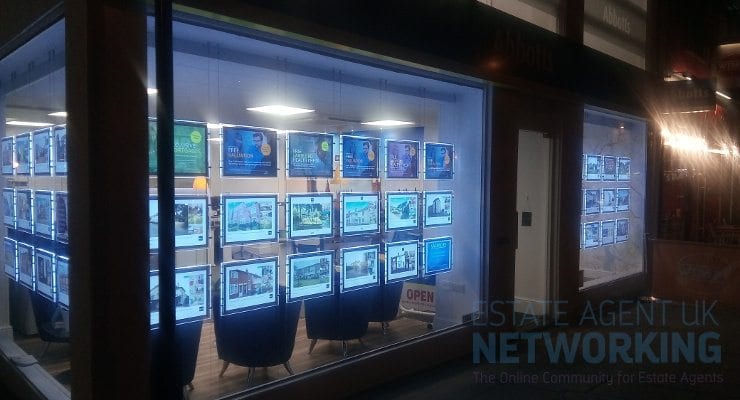Light Pollution and Property Display
Pollution of every kind is coming under ever greater scrutiny from consumers, the media and national and local government, and light pollution may become the next area for debate and increased intervention.
Will this affect estate agents and their displays? Anecdotal evidence from Europe suggests a hardening of attitudes is impacting in some places and requiring agents to reduce any ‘obtrusive’ light. Despite BREXIT, could this policy become the latest EU export?
Adding to the current situation is the increasingly mixed nature of many High Streets. There are fewer retailers and more accommodation on most High Streets and this is bound to affect local authorities decisions about acceptable levels of light; ‘nuisance’ is not defined in law and often becomes an issue of opinion rather than fact.
Duration, frequency, impact, local environment, motive – i.e. unreasonable behaviour and sensitivity of the plaintiff are all factors that can be considered when determining if there is a nuisance lighting. Even the existence of planning permission does not mean a statutory nuisance cannot exist, and the character of an area will also be a factor.
Light Pollution Solutions for Estate Agents.
If you are concerned about intrusive light from your window display there are lots of options.
As the DEFRA website states ‘ prevention is better’ than cure and it is at the planning and design stage that the issue of potential nuisance can be addressed. The correct layout and choice of products will provide a long-term solution. The days of filling every available window space with display are over but smart design will help maximise the impact of your window display as well as support your brand and make the most of your High Street presence. Seek professional design advice when installing for the first time or upgrading your window displays.
Secondly, as the UKGov website states “More lighting does not necessarily mean better lighting.” The amount of LED lighting in any single display frame will vary from manufacturer to manufacturer. Some max out the amount of LED to max the light output but this is bad for the environment in terms of light output and energy-use. An alternative is a LED light pocket that uses less LED lighting without compromising on the effectiveness of its display impact.
Thirdly, there are some retro-fit dimmer and timer options for those who do not wish to upgrade their display at the moment. A whole range of dimmers and timers have been designed to help you gain greater control over your LED display. A timer will turn displays on when light falls and off as daylight returns but to reduce the potential of intrusive light why not switch displays OFF when the least footfall is around? Dimmers will also enable energy savings and an easy way to reduce light output
Written by Michelle Farnsworth, Mid West Displays.









